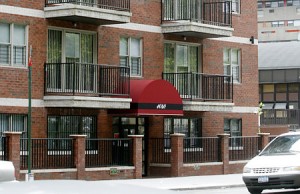Posted by Teresa on June 25, 2013 under Rental Market | 
 Ask a landlord in San Francisco or New York City how they feel about running their business in their city, and you might hear a long list of complaints. Rent control, tenants’ unions and plenty of regulations make those markets tough for landlords.
Ask a landlord in San Francisco or New York City how they feel about running their business in their city, and you might hear a long list of complaints. Rent control, tenants’ unions and plenty of regulations make those markets tough for landlords.
But of course, there are other cities that aren’t exactly ideal for landlords, for other reasons. These are the places where buying property and renting it out for a reasonable return on your investment is more challenging. Luckily, there are plenty of markets where it’s possible to buy a home for less than it costs to rent a typical home—so in theory, landlords can buy low and rent high. Of course, if it’s cheaper for landlords to buy, it’s also cheaper for homeowners to buy!
You’d be best off by analyzing your own financial situation and seeking investment advice from a professional before adding any properties to your portfolio.
Based on information from the real estate evaluation site Trulia, the following cities were rated as the “best” and “worst” places to be a landlord.
Best Places: Where it’s much cheaper to buy vs. renting:
| City |
Buying vs. Renting |
| Detroit, MI |
-70% |
| Dayton, OH |
-63% |
| Gary, IN |
-63% |
| Cleveland, OH |
-63% |
| Warren-Troy, MI |
-63% |
| Toledo, OH |
-62% |
| Memphis, TN |
-62% |
| Kansas City, MO |
-60% |
| Birmingham, AL |
-59% |
| Indianapolis, IN |
-58% |
Worst Places: Where it’s much cheaper to rent vs. buying:
| City |
Buying vs. Renting |
| San Francisco, CA |
-19% |
| Honolulu, HI |
-23% |
| San Jose, CA |
-24% |
| New York, NY |
-26% |
| Albany, NY |
-30% |
| Orange County, CA |
-32% |
| San Diego, CA |
-33% |
| Los Angeles, CA |
-35% |
| Long Island, NY |
-36% |
| Ventura County, CA |
-36% |
Posted by Teresa on April 3, 2013 under Housing Trends | 
 The U.S. Department of Housing and Urban Development and the U.S. Census Bureau recently conducted a survey to gather more data on the country’s multifamily rental properties. Multifamily rentals numbered approximately 2.3 million in the U.S., but little was known on their value, or how they are financed.
The U.S. Department of Housing and Urban Development and the U.S. Census Bureau recently conducted a survey to gather more data on the country’s multifamily rental properties. Multifamily rentals numbered approximately 2.3 million in the U.S., but little was known on their value, or how they are financed.
Recent data shows that approximately one in five American households live in multifamily rental properties, most of which are owned by individuals—not large companies.
The two agencies produced a report that combined existing information and new data on number of units, value, ownership status, mortgage financing, Federal and state benefits, and other information.
A few statistics from the survey:
- 73% of multifamily rentals are comprised of one building.
- 67% are owned by households or individuals.
- 77% provide parking.
- 19% have buildings built before 1920.
- 87% of owners reported making repairs to their properties in 2010 or 2011; the median cost was $699 per unit.
- In multifamily rental properties with 50 or more units, 45% have 20 or more buildings.
- 73% were acquired by their owners before 2005.
It’s clear that not all Americans can or want to buy their own home. For some, renting is a way of life; for others, it’s the only viable option available. Multifamily rental housing, according to the report, is “critical to solving the nation’s affordable housing problems.”
Posted by Teresa on January 5, 2012 under Rental Market | 
 For landlords in most markets, 2011 was a good year, with low vacancy rates and higher rents than previous years. What can landlords expect to see in 2012?
For landlords in most markets, 2011 was a good year, with low vacancy rates and higher rents than previous years. What can landlords expect to see in 2012?
Strong growth in rental demand. Forecasters say demand will continue to grow for rental housing, based on a continued weak job market. Employment is expected to improve at a slow rate, which could increase demand as more people move out of shared housing situations.
A continued soft housing market. Losing renters to home purchases will probably not be a big issue for rental property owners. In some areas, such as Texas, home sales started increasing in the last half of 2011. Wherever employment growth occurs, demand for rentals will continue, and some home sale increases are expected.
Lower than normal supplies of multi-family housing. While construction permits are increasing and new development is starting to happen, most big construction projects are still in the planning phase. In most areas, new supply levels won’t be much higher in 2012. Exceptions are Washington DC, Dallas, Tex. and Orange County, Calif.
Higher occupancy rates. The economy will continue to produce renters for low- and mid-tier properties. High-end properties are still in high demand, but as wages stagnate, more renters will be pushed into lower rents, driving those occupancy rates higher.
Rent growth of 4% to 4.5%. Property owners who continue to increase rents could see higher turnover; others will likely see value in keeping existing tenants.
Top Ten Rental Markets for 2012
- San Francisco will continue to lead the nation in apartment rental growth, followed by:
- Austin, Tex.
- San Jose, Calif.
- Oakland, Calif.
- Boston, Mass
- New York City
- Denver, Colo.
- Dallas, Tex.
- Charlotte, North Carolina
- Houston, Tex.
Protect your rental property and assets through tenant background checks. Proper tenant screening will ensure you are leasing to the best possible tenants.
Posted by Teresa on November 18, 2011 under Housing Trends, Rental Market | 
 Trulia is a real estate website where home buyers, renters, and sellers can track sales and rental activity in any city or neighborhood. The website recently launched a new report that reveals where renters and homebuyers live now, compared to where they want to live in the future.
Trulia is a real estate website where home buyers, renters, and sellers can track sales and rental activity in any city or neighborhood. The website recently launched a new report that reveals where renters and homebuyers live now, compared to where they want to live in the future.
The report tracked searches on the site between July 1 and September 30, 2011. The results may reveal where demand could be increasing ahead of actual sales and lease information. Trulia’s Chief Economist said that they believe the low prices in areas like Florida, Nevada and California will draw more prospective movers – who will be attracted to buying, rather than renting homes, as rental markets continue to tighten.
The company created an index for each metro area, based on the numbers of property views by people who live elsewhere. It also took into account the number of out-of-area property searches conducted by locals in each metro region.
The Top Ten High Demand Metro Areas For Homebuyers
1. Sarasota, FL: Foreclosure jumped 57% last quarter; home prices have fallen 51.4% since the peak and are expected to decline another 6.5% through Q2 2012. For every person in Sarasota looking for a home elsewhere, 6.03 people from out of the area are looking at Sarasota real estate.
2. Riverside, CA: High unemployment and poor economic conditions led to 55.4% drop in home prices from the peak and they are expected to decline another 14.8% through Q2 2012. For every person in Riverside looking for a home elsewhere, 4.36 people from out of the area are looking at Riverside real estate.
3. Charleston, SC: Real estate prices are down 23.3% since the peak and are expected to decline another 1.6% through Q2 2012. For every person in Charleston looking for a home elsewhere, 2.25 people from out of the area are looking at Charleston real estate. Retirement destination.
4. Fort Lauderdale, FL: Median home price went from $400K to under $200K in five years. Real estate prices are down 48.4% since the peak and are expected to decline another 9.2% through Q2 2012. For every person in Fort Lauderdale looking for a home elsewhere, 2.15 people from out of the area are looking at Fort Lauderdale real estate. Lots of retirees.
5. Cape Coral, FL: The market is bad here, but bargains exist. Real estate prices are down 59.3% since the peak and are expected to decline another 12.2% through Q2 2012. For every person in Cape Coral looking for a home elsewhere, 2.09 people from out of the area are looking at Cape Coral real estate.
6. West Palm Beach – Boca Raton, FL: One in four home sales in past year was a foreclosure. Real estate prices are down 50.2% since the peak and are expected to decline another 9.6% through Q2 2012. For every person in West Palm Beach looking for a home elsewhere, 1.99 people from out of the area are looking at West Palm Beach real estate.
7. Fort Worth – Arlington, TX: Home prices going up. Real estate prices are down just 5.9% since the peak and are expected to increase 2.7% through Q2 2012. For every person in Fort Worth looking for a home elsewhere, 1.97 people from out of the area are looking at Fort Worth real estate. Mostly from Dallas.
8. Oxnard, CA: Mecca for retirees. Real estate prices are down 40% since the peak and are expected to decline an additional 6% through Q2 2012. For every person in Oxnard looking for a home elsewhere, 1.92 people from out of the area are looking at Oxnard real estate.
9. Las Vegas: Two out of three homes underwater. Real estate prices are down 60% since the peak and are expected to decline an additional 11.4% through Q2 2012. For every person in Vegas looking for a home elsewhere, 1.88 people from out of the area are looking at Vegas real estate.
10. Orlando, FL: Hit hard by the housing crisis. Real estate prices are down 53.4% since the peak and are expected to decline an additional 11.4% through Q2 2012. For every person in Orlando looking for a home elsewhere, 1.87 people from out of the area are looking at Orlando real estate.
Posted by Teresa on September 13, 2011 under Housing Trends, Rental Market | 
 According to the U.S. Census Bureau, there has been a big jump from 2007 in the number of individuals and families doubling up in housing. The definition of “doubled-up” households are those that include at least one person over age 18 who is not in school, not the householder, and not a spouse or partner of the householder.
According to the U.S. Census Bureau, there has been a big jump from 2007 in the number of individuals and families doubling up in housing. The definition of “doubled-up” households are those that include at least one person over age 18 who is not in school, not the householder, and not a spouse or partner of the householder.
The Census Bureau says 69.2 million, or 30%, of adults were doubled-up in 2010, compared to 61.7 million adults, or 27.7% in 2007. Total American households who have doubled up due to unemployment or underemployment stands at 18.3%.
Much of the increase comes from people aged 25 – 34, living with their parents. That number increased from 4.7 million before the recession to 5.9 million (14.2% of the age group) in 2010.
The study was done as part of the Census Bureau’s wider report on income, poverty and health insurance. The report shows that household incomes dropped sharply last year. Since 2007, they have fallen 6.4%. Not surprisingly, the number of people living in poverty rose sharply, up for the fourth year in a row to 46.2 million people, or 15.1%.
If counted separately, some 45% of the young adults who live with their parents would fall below the poverty threshold. Because an entire household’s income is counted when determining poverty status, the group has an official poverty rate of only 8.4%.
What does the Census Bureau data mean for landlords?
- Fewer households mean lower demand for rental housing.
- Americans have less income to spend on housing and other necessities.
- Fewer home sales will continue to drag the housing market down.
- Once the economy starts to improve, many of the families and adult children will move out on their own, spurring a strong demand for housing.
Now, if only the economy would start to improve!
Posted by Teresa on August 17, 2011 under Housing Trends, Rental Market | 
 Real estate investors have long been active in college towns for a number of reasons. Rentals are often short-term and dealing with younger students as tenants can be problematic, but when mom and dad co-sign the lease, they tend to pay the rent on time every month.
Real estate investors have long been active in college towns for a number of reasons. Rentals are often short-term and dealing with younger students as tenants can be problematic, but when mom and dad co-sign the lease, they tend to pay the rent on time every month.
College enrollments are up, and on-campus housing is in short supply. Demand for rentals is high and vacancies low, so rents are generally healthy. All told, college students who need a place to live can be excellent prospective tenants—and rental property in a college town can be a great opportunity, if the terms and price are right for you.
Move.com recently published a list of the best university cities for real estate investment. Here’s how their ratings shook out:
| City |
Median List Price |
Average Rent, 2BR |
Average Rent, 3+BR |
| Boston |
$335,000 |
$3,122 |
$3,913 |
| Nashville |
$189,000 |
$949 |
$1,020 |
| Chicago |
$199,900 |
$1,780 |
$2,074 |
| Washington DC |
$375,000 |
$3,086 |
$3,214 |
| Houston |
$174,900 |
$1,218 |
$1,478 |
| South Bend, IN |
$112,900 |
$790 |
$880 |
| Atlanta |
$159,600 |
$1,236 |
$1,485 |
| Baltimore |
$242,700 |
$1,443 |
$1,663 |
| St. Louis, MO |
$163,945 |
$1,016 |
$1,283 |
| Syracuse, NY |
$154,900 |
$838 |
$970 |
- Boston has over 50 colleges and list prices have dropped nearly 3% since last June. Rents are on the rise.
- Nashville’s average rents are higher than the average mortgage of $770.
- Chicago’s median list price is down over 16% since last June.
- Washington DC’s average mortgage for a median-priced home is around $1,530.
- Houston has low-priced inventory and some top-ranked colleges. Average mortgage is about $710.
- South Bend is home to Notre Dame and the average mortgage payment is around $990.
- Atlanta’s median list price is down 13.68% from last June, and lower than the national median.
- Baltimore is home to Johns Hopkins University, with median prices down 7.72% since last year.
- St. Louis, MO ‘s median list price is also lower than the national average, and mortgage payments average around $670.
- Syracuse is home to Syracuse University, as well as several other colleges. Median prices are down and the average mortgage payment is around $630.
College towns have a ready-made pool of renters, and generally, the rent money is not a problem. Manage the property correctly, and you could have a successful investment for years to come.
Posted by Teresa on February 22, 2011 under Housing Trends | 
 The Obama administration recently revealed its proposal to reduce Fannie Mae (FNMA) and Freddie Mac (FMCC), the mortgage giants that have enabled homeownership for millions of Americans. The report offered three options for replacing the two agencies.
The Obama administration recently revealed its proposal to reduce Fannie Mae (FNMA) and Freddie Mac (FMCC), the mortgage giants that have enabled homeownership for millions of Americans. The report offered three options for replacing the two agencies.
It also makes it clear that rental housing will remain a priority as more renters enter the market in coming years. In the white paper, the government recognizes Americans are giving up homeownership in favor of renting. With a record 37 million rental households and a possible 4.4 million additional by 2015, it’s not something that can be ignored—and the administration is not.
“Americans should have choices in housing that make sense for them and their families. This means rental options near good schools and good jobs,” the report states. It further indicates that finding ways to maintaining funding to the rental market will be “critical.”
One proposed action is expanding the Federal Housing Administration’s support to the multifamily industry, including developing programs to serve hard-to-reach segments, including the smaller properties that comprise one-third of all rental apartments. The report noted that half of renters spend more than one-third of their income on housing, while a quarter spend more than half; a commitment to affordable rental housing is indicated, although the term is not defined.
The National Multi Housing Council, a trade group, responded that reform is needed in the single-family sector, that Fannie and Freddie’s multifamily programs were not part of the financial meltdown and that “they are a vital capital source for the rental housing sector.”
Posted by Teresa on February 12, 2011 under Landlord Tips | 
 As vacancy rates drop in many areas, landlords are increasingly phasing out incentives and enticements to attract tenants. It was not too long ago when you’d see banners for “One Month Free Rent” or “Free DVD With 1-year Lease” on apartment buildings.
As vacancy rates drop in many areas, landlords are increasingly phasing out incentives and enticements to attract tenants. It was not too long ago when you’d see banners for “One Month Free Rent” or “Free DVD With 1-year Lease” on apartment buildings.
Now, not only are those signs coming down, but rents are starting to climb as rental inventory drops and demand rises. How does a rental property owner determine what rent to charge? How do the changing conditions in your area affect the rent you can charge?
The obvious answer is to look at what the market will bear. Many landlords begin their research by checking the Fair Market Rent (FMR) for their area. FMR is the amount of money a property will lease for, based on variable factors like economic conditions, location, and local vacancy rates.
The U.S. Department of Housing and Urban Development (HUD) uses Fair Market Rent values to determine the eligibility of rental housing units for housing assistance, known as Section 8 payments. The values are designed to be high enough to ensure an adequate supply of rental units, but low enough to serve as many families as possible.
Once you’ve established the FMR for your area, compare it to what is being charged for similar unites. Check Craigslist.com, local advertising, and sites like ForRent.com, Rent.com, Rental.com and any local sites that cater to your city.
Don’t be tempted to set rent too high or too low for your properties. You are in business to make a profit—and while lower rents may keep your units full, if you’re not making money, you will not survive in the investment property business.
On the other hand, setting rents too high will almost guarantee that good tenants will pass up your property for similar amenities at a lower price. Still, when vacancies are low, you can away with charging a premium rent. Setting rent is a balancing act: keep an eye on the rental market at all times, and adjust your rents accordingly.
Resources:
http://www.huduser.org.
http://rentometer.com
Posted by Teresa on August 17, 2010 under Landlord Tips, Tenant Screening & Background Checks | 

- An incomplete tenant background check may not provide information on a lease applicant’s employment and income.
- Verifying the employer listed by a lease applicant will indicate his or her honesty—or lack of it. If you call the number provided and the telephone is not answered professionally (or at all) you might have reason to suspect the potential tenant is not being truthful. Certainly, exceptions apply—especially for small businesses.
- Long-term employment is an indicator of stability. However, recent economic difficulties have put many talented and dedicated employees out of work. Landlords may need to be flexible on their standards until the economy recovers. Requiring all tenants to have held their jobs for two years, for example, could mean a record number of vacant rental units for you.
- It can help you determine whether a potential tenant’s income source is lawful or illegal. Sure, it’s nice to have tenants who have plenty of cash to pay their rent. But if they’re not legally employed or cannot provide proof of income, like pay stubs, you could be asking for big trouble.
- Verifying employment can give you peace of mind. Renting to qualified tenants with jobs is the number one concern of most landlords. Confirming your lease applicants’ employment can keep your cash flow healthy and reduce turnover in your rental properties.
The best time to thoroughly check out a tenant’s employment situation is before the lease is signed. Following this tenant screening procedure on every applicant will ensure that you are not discriminating against any protected groups and that you will be leasing to only qualified tenants.
Posted by Teresa on August 12, 2010 under Housing Trends | 
 Politicians and federal policymakers don’t always agree on how to best serve the U.S. economy and needs of taxpayers. One thing everyone can admit is that Freddie Mac and Fannie Mae nearly collapsed in the recent housing crisis, with a huge loss of taxpayer money.
Politicians and federal policymakers don’t always agree on how to best serve the U.S. economy and needs of taxpayers. One thing everyone can admit is that Freddie Mac and Fannie Mae nearly collapsed in the recent housing crisis, with a huge loss of taxpayer money.
Some critics think an overhaul of the mortgage giants is in order; how long, they ask, can the government sustain guaranteeing 90% of mortgages? Others say the U.S. needs to shift its emphasis away from a goal of “homeownership for all.”
Homeownership in the U.S. fell to its lowest level in 50 years and projections say it could sink even lower. It’s now at 67% and is predicted to drop to 62% between 2012 and 2020, as millions of homeowners lose their homes to foreclosure. Massive government subsidies in the form tax breaks on mortgage interest and avoiding capital gains taxes incentives have not prevented the foreclosures millions of Americans are facing.
Now, government-sponsored home ownership incentives are in question. Some say the policies are outdated and have encouraged overinvestment in housing. The Treasury Department says it’s moving toward big changes—including promoting affordable housing for owners and renters alike. More rental housing assistance for lower-income and senior citizens could be on the way, too.
- Government subsidies for home owners in 2009: $230 billion
- Government subsidies for rental market in 2009: $60 billion
Experts say there are many advantages to renting over homeownership. It’s easier to move in search of work, for example. Right now, many families are “stuck” in homes they cannot sell and therefore cannot take advantage of employment opportunities in other cities or states. The lower cost-of-entry into rental housing allows people to save more money, too. Home ownership is expensive, and not always a wise investment.
Landlords could be seeing more qualified tenants, as rental housing assstance becomes more available to folks who need it.
 Ask a landlord in San Francisco or New York City how they feel about running their business in their city, and you might hear a long list of complaints. Rent control, tenants’ unions and plenty of regulations make those markets tough for landlords.
Ask a landlord in San Francisco or New York City how they feel about running their business in their city, and you might hear a long list of complaints. Rent control, tenants’ unions and plenty of regulations make those markets tough for landlords.








